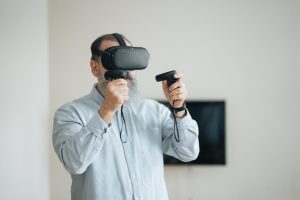The Evolution of Luxury Retail: From Exclusivity to Accessibility
Welcome to the world of luxury retail, where high-end designer goods and exclusive shopping experiences used to be reserved for the elite few. However, in recent years, the landscape of luxury retail has undergone a significant transformation. What used to be an industry built on exclusivity and prestige has now shifted towards accessibility and inclusivity. In this article, we will explore the evolution of luxury retail, from its roots in exclusivity to its current focus on accessibility.
The Rise of Luxury Retail
The concept of luxury retail has been around for centuries, with origins dating back to ancient civilizations. However, it wasn’t until the early 20th century that luxury retail as we know it today began to take shape. With the rise of capitalism and consumerism, luxury goods became a status symbol for the wealthy and were seen as a way to display one’s social status.
During this time, luxury brands focused on creating an aura of exclusivity around their products. They carefully controlled their image and distribution to maintain a sense of rarity and desirability. High-end department stores like Harrods and Bloomingdale’s became the go-to destinations for wealthy shoppers looking for luxury goods.
The Shift towards Accessibility
However, with the rise of the middle class and the changing values of younger generations, the definition of luxury began to evolve. No longer was it solely about owning expensive goods; it became more about the experience and the values associated with the brand. Luxury shoppers were now looking for brands that aligned with their personal beliefs and values, leading to a shift towards sustainability, social responsibility, and inclusivity.
Brands that embraced these values began to gain popularity, with many luxury retailers recognizing the need to appeal to a wider market. The rise of e-commerce and digital marketing also played a significant role in making luxury goods more accessible to a global audience.
The Rise of the Aspirationals
Another factor that contributed to the shift towards accessibility in luxury retail is the rise of the “aspirational” consumer. These are individuals who may not have the financial means to purchase luxury goods regularly, but aspire to own them and are willing to splurge on occasion.
Brands have capitalized on this emerging market segment by offering more affordable options, such as diffusion lines or collaborations with high-end designers and mass-market brands. By doing so, they not only appeal to aspirational consumers but also introduce their brand to a wider audience, further driving accessibility and sales.
The New Face of Luxury Retail
As the landscape of luxury retail continues to evolve, many brands have shifted their focus towards inclusivity and accessibility. This is seen in various initiatives, such as offering extended sizes, creating more diverse marketing campaigns, and expanding their product offerings to cater to a broader audience.
One excellent example of this is the increasing number of luxury brands incorporating streetwear into their collections. Streetwear, which was once associated with urban youth culture, has now become a significant trend in luxury fashion. Brands like Louis Vuitton, Gucci, and Balenciaga have all embraced this trend, blurring the lines between high fashion and streetwear and making luxury goods more accessible to a younger and more diverse audience.
The Role of Technology
The rise of technology has also played a crucial role in the evolution of luxury retail, enabling brands to offer personalized and immersive shopping experiences. Augmented reality, virtual reality, and artificial intelligence have all been adopted by luxury retailers to enhance the customer experience and make it more inclusive.
For instance, Burberry’s flagship store in London features interactive mirrors that allow customers to customize and visualize their own trench coat, making the shopping experience more engaging and personalized. Other luxury brands have also incorporated facial recognition technology and mobile apps to make the in-store experience more convenient and personalized.
The Future of Luxury Retail
As we look to the future, there is no doubt that accessibility and inclusivity will continue to shape the luxury retail industry. With the rise of digital-native generations and the increasing demand for sustainable and ethical practices, luxury brands will need to continue evolving to stay relevant and attract the next generation of luxury shoppers.
While exclusivity will always be a part of luxury retail, the focus on accessibility and inclusivity has become a key driver for success in the industry. The evolution of luxury retail has shown that with careful adaptation and innovation, brands can maintain their appeal to loyal customers while also expanding their reach to a broader and more diverse audience.
In conclusion, the transformation of luxury retail from exclusivity to accessibility is a reflection of the changing values and preferences of consumers. With the right strategies and a willingness to evolve, luxury brands can continue to thrive and remain relevant in an ever-changing market.










